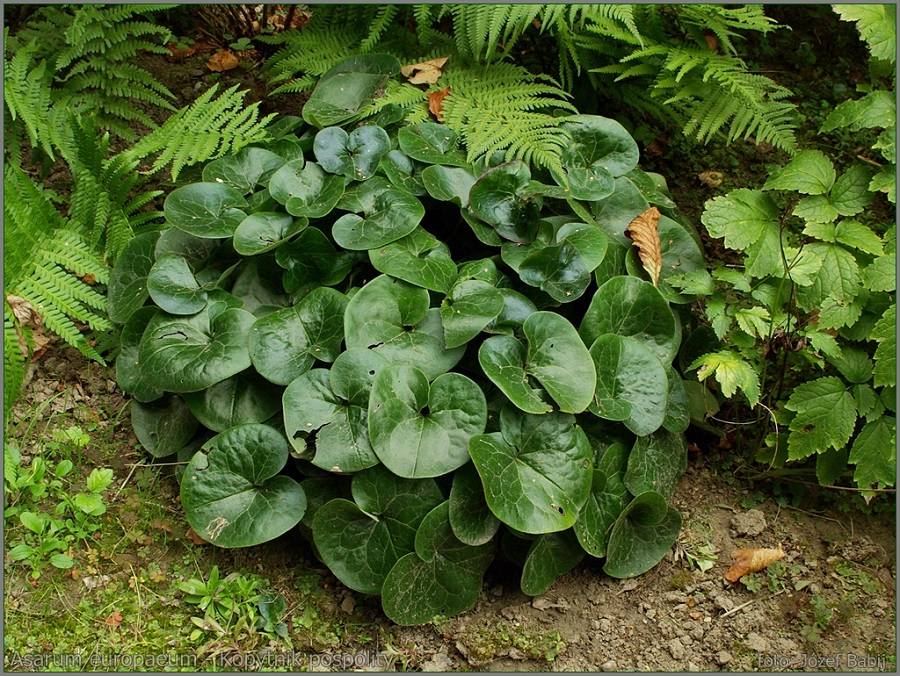23 Breathtaking Perennials You Should Plant in Your Garden
Perennials are perfect for those who want to avoid having to replant plants in their garden every year. The most beautiful perennial plants decorate gardens for a long time. What's more, many of them can survive cold winters - without having to protect them. Thanks to this, perennials are a very attractive option as opposed to other plants. Check the most popular ones.

Perennial plants - what are perennials?
Perennials are among the most popular plants appearing in gardens. You can use them both in classic flowerbeds, and in rock gardens. They can also be spotted on recreational lots.
What’s important, there’s a great variety of perennial plants to choose from. Thanks to this, you can easily pick the best species matching your expectations and fitting into your garden. Most such plants grow low, which is key for some people.

Why should you plant perennials in your garden?
The biggest advantage of perennials is that it’s a very diverse group of plants. Many varieties bloom in different seasons and develop various colors. Thanks to this, you can make the whole garden look splendid and colorful over the course of the whole year.
Perennial plants typically aren’t very demanding. Because of it, taking care of them takes minimal effort and still brings fascinating results. It’s also a perfect option for beginner gardeners who have little experience with plants.
Perennials look beautiful when planted next to each other. Thanks to their diversity, you can create unique and eye-catching arrangements in the garden, increasing its attractiveness.
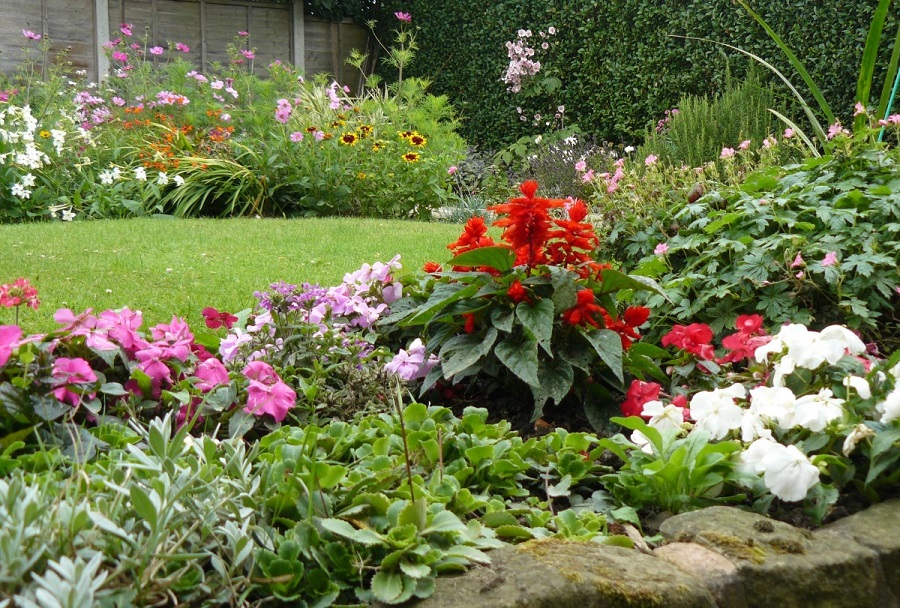
Perennial plants that can survive harsh winter
Perennials that can stay in the ground over a cold winter should be planted in every garden - as claimed by some gardeners. They are the least demanding plants - although some of them need certain humidity levels or a particular growing spot. But there are so many of them that you can easily plant many varieties across the entire garden. Find the most intriguing types below.

Peony (Paeonia)
Peony, sometimes spelled paeony, is an exceptionally beautiful perennial. It’s popular in many gardens. The plant originates in East Asia - but currently, it can be found across the whole world. It’s common in Europe and North America. There are a couple dozen types of peonies.
Perennials from this group have an intense scent, although its strength depends on the particular variety. Some types are frost-resistant, so you don’t have to worry about the weather regarding these plants.

Echinacea (Echinacea Moench)
Echinacea is a perennial included in the sunflower plants family. It originates in South America, where it was the primary element in the medicine cabinet. In Europe, it’s known mostly as an ornamental plant - its other benefits are the secondary interest.
Perennial plants like echinacea are resistant to low temperatures and frost, so they can easily endure cold winters when growing in the ground. Echinacea needs a sunny location and humid soil. If the latter is fertile enough, the plant will grow up to 1.5 m tall. Interestingly enough, echinacea doesn’t like being transplanted, so make sure to carefully plan its location in the garden.
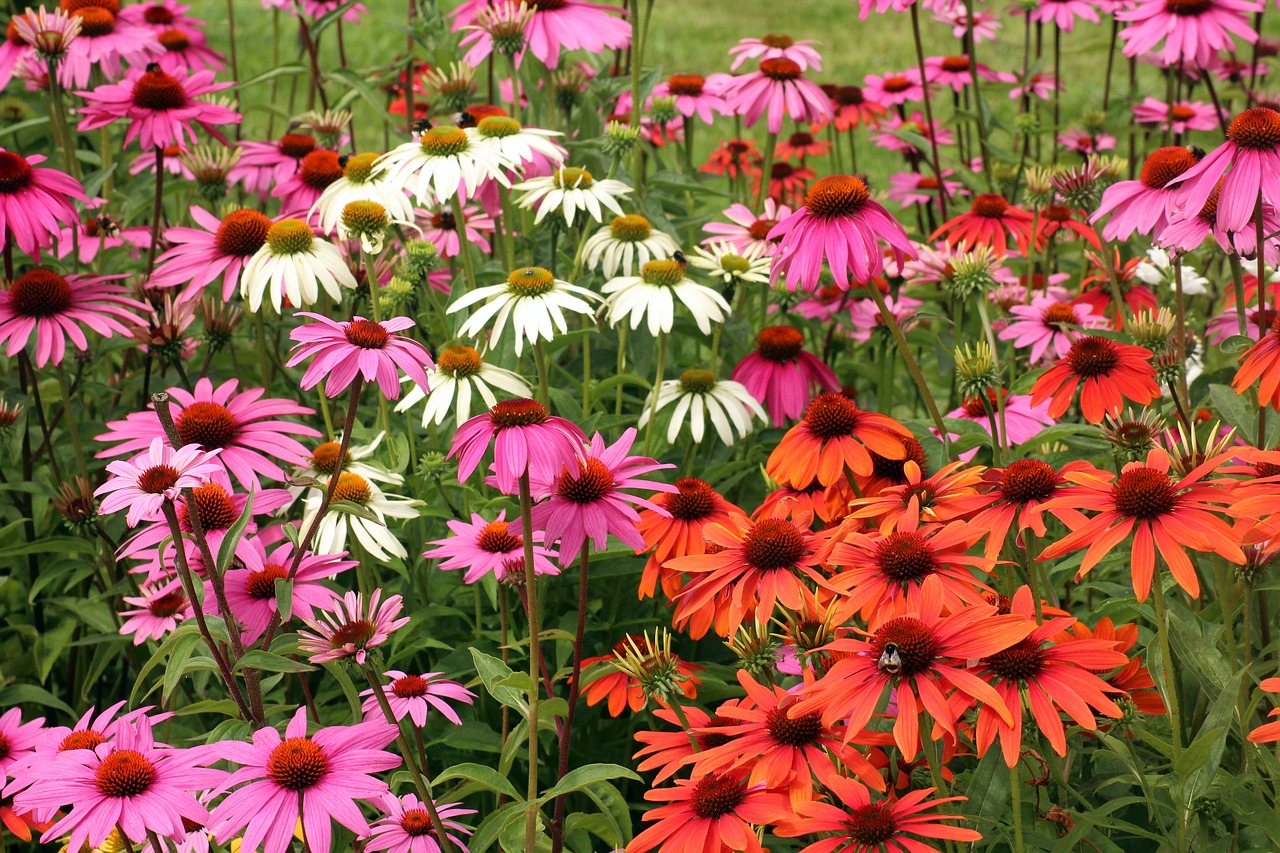
Siberian larkspur (Delphinium grandiflorum)
Siberian larkspur is a very interesting perennial originating in China. This plant grows in Siberia as well. Judging only by this, you can assume it’s resistant to low temperatures.
Siberian larkspur is special for its slow growth rate. It usually grows no taller than 50-60 centimeters. The variety of colors is its another big advantage. This perennial plant develops flowers in the following colors:
- white,
- pink,
- blue.
The plant grows best in half shade, and the soil should be quite fertile. Thanks to this, the perennial will bloom beautifully.

Common pink (Dianthus plumarius)
Common pink belongs to the perennial plants group, and is very popular in Europe. Sometimes, they occur naturally, although it’s quite rare. It’s a short plant, as it reaches up to 30 centimeters. The flowers are small as well.
Full sun is the best place for common pinks. The soil is important as well. It should be permeable. This type of perennial plants can stay in the ground for winter - it’s frost-resistant.

Showy stonecrop (Hylotelephium spectabile)
Showy stonecrop is a low-growing perennial plant. Its maximal height is 60 cm. Its flowers and leaves look quite impressive. The former appear in summer, and the blooming lasts even until autumn. But everything depends on the environment in which the plant grows.
Showy stonecrop is a full sun perennial. The soil should be permeable, fertile and moist. If provided with such conditions, the plant will bring you great results.
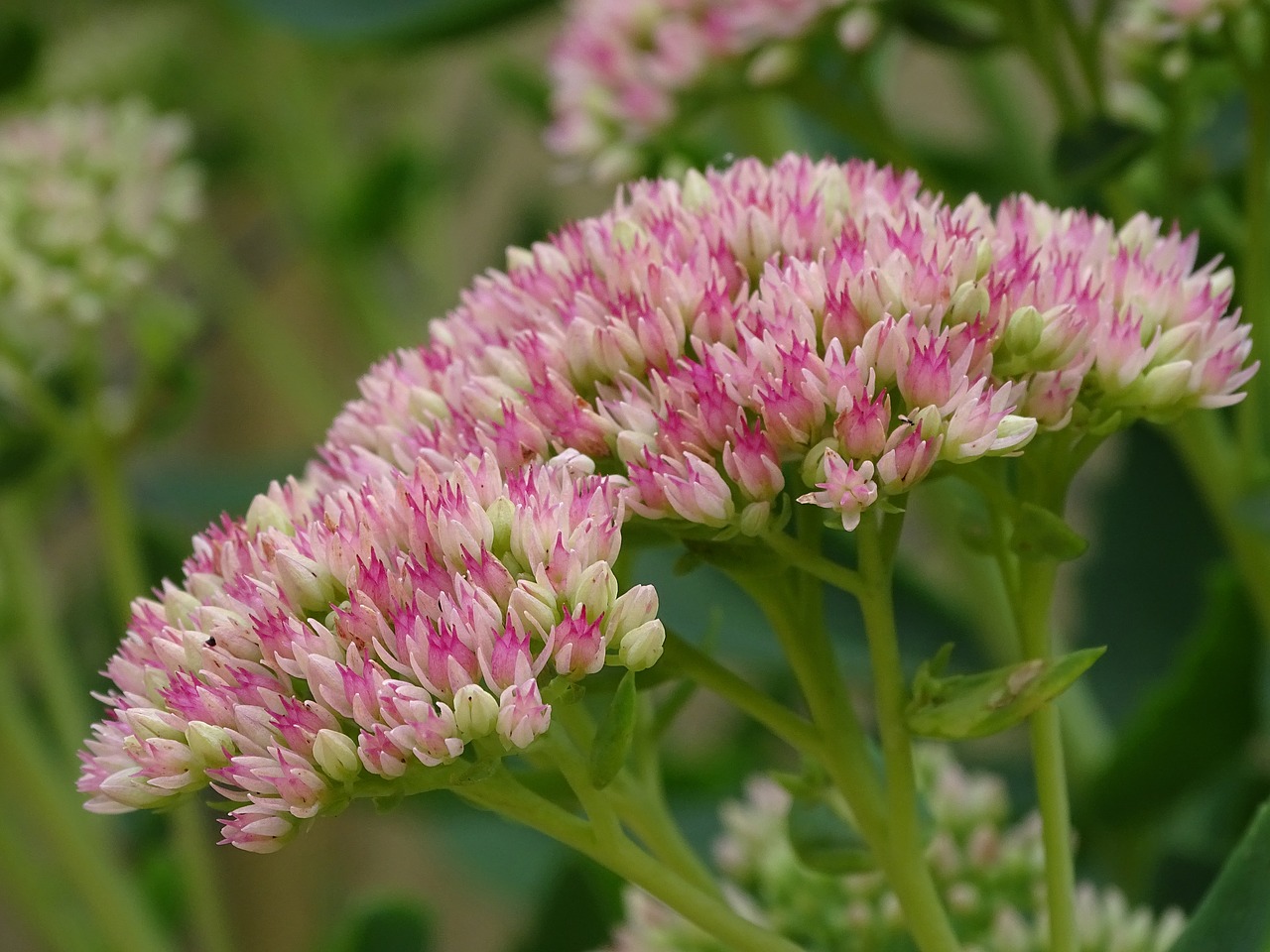
Perennial flowers that bloom from spring to fall
Long flowering perennials are particularly valued among gardeners. Their colorful flowers decorate gardens usually from summer to late autumn - depending on the plant. Check a few examples below - perhaps you’ll like some of them.
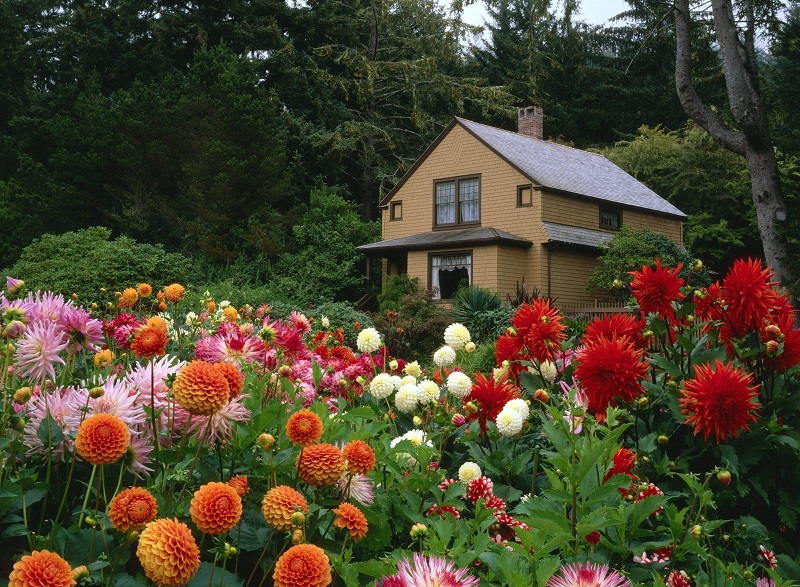
Maiden pink (Dianthus deltoides)
Maiden pink is a highly universal perennial plant which can grow both in gardens and on balconies. The right spot is the basic requirement of this species - the plant is one of the full sun perennials.
Perennials like maiden pink aren’t tall. They typically grow up to 15 centimeters. Long blooming time is their characteristic feature. With proper care, it lasts from the beginning of June until the end of September in temperate climate zones.
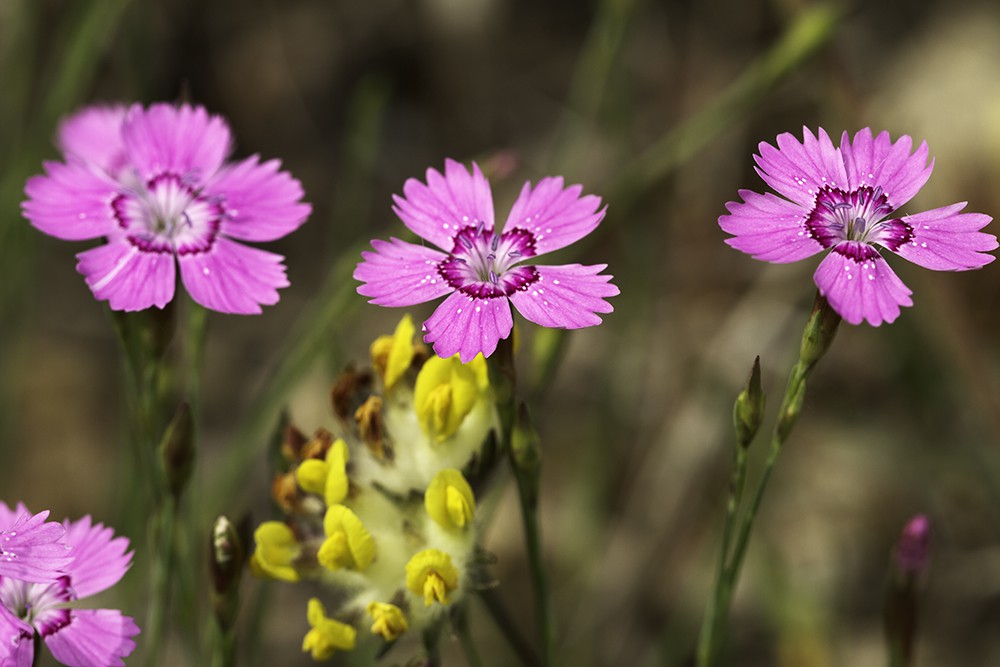
Blue eryngo (Eryngium planum)
Blue eryngo has few requirements for its proper development. Sunlight and soil don’t matter, in this case. The perennial can grow even in a very dry ground.
The plant is characteristic for its unusual appearance. It grows up to 1 meter tall, and its stems are quite stiff - you can break them easily. This flowering perennial has a long blooming season. The flowers appear from summer to fall.

Hummingbird mint (Agastache x hybrida)
The perennial plant hummingbird mint is distinct for its long blooming time and intense smell. Some compare it to anise, others to mint. It depends on the strength of the scent.
Hummingbird mints are perfect full sun perennials, but they can grow in half shade as well. But other plants shouldn’t obstruct the sunlight completely. Make sure to plant the hummingbird mint in fertile ground. The soil should be permeable and moist.

False sunflower (Heliopsis helianthoides)
False sunflower is one of the largest perennials - it grows up to 1.5 meters. It looks like a sunflower, but the flowers are smaller and have a different centre. The plant starts blooming in July, and the flowers remain until late autumn - up to October.
False sunflowers are popular all over the world, mostly because of their low requirements for sunlight and soil.
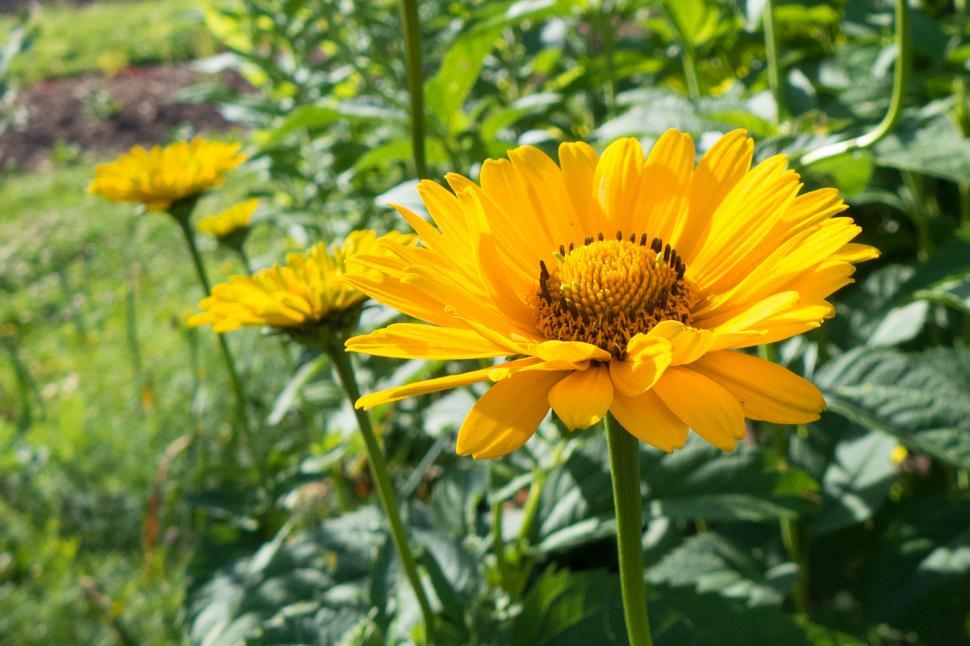
Large-flowered tickseed (Coreopsis grandiflora)
Large-flowered tickseed is a perennial which grows up to 90 cm tall. Its flowers have a characteristic yellow color, although this feature differs, depending on the variety. One feature is universal - the plant blooms from the beginning of June until the end of September.
You can expect the best results by planting tickseeds in full sun. This way, the flowers develop more intense colors. This perennial likes permeable and fertile soils.

True lavender (Lavandula angustifolia)
Lavender is a perennial valued not only for its beautiful smell but also other properties. It smells heavenly, can be used in various homemade cosmetics, and most importantly - repels some insects. Thanks to this, it’s popular all over the world.
Lavender loves growing in full sun. That’s why it often appears in gardens, but also on patios and balconies. The ground should have high pH and be rather dry. Feed the plant from time to time using an alkaline fertilizer.

Best short sun-loving perennials
Low growing full sun perennials are perfect if droughts are any concern. Even very long periods without rain aren’t a threat to them - as you can also water them manually. Find the most interesting sun loving perennials below - perhaps you’ll find them perfect for your garden.
Baby’s breath (Gypsophila paniculata)
Baby’s breath is a well-known perennial to all florists. Thanks to its small white flowers, it’s a perfect addition to various flower arrangements. It looks beautiful in bouquets, combined with roses.
Baby’s breath grows best in full sun and relatively dry soil. The ground should be permeable. It’s a frost resistant perennial plant, which is a big advantage.
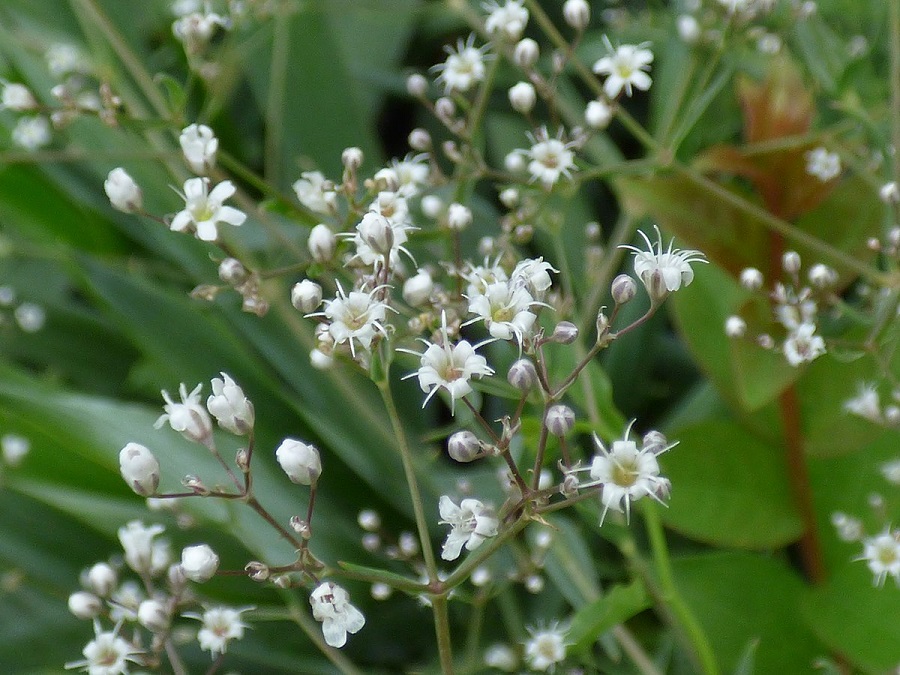
Houseleek (Sempervivum)
Houseleek is a perfect plant for rock gardens. Although it spreads extensively, usually a small fragment of the ground is enough for it to grow. The best spot for it is half-shade with damp soil. These are the best conditions for the proper growth of this plant. But droughts aren’t a problem for houseleeks. They have developed a special protective system. The leaves of this perennial grow densely next to each other - thanks to this, they don’t lose any excessive water. Houseleeks don’t grow tall, they spread on the ground instead. Their maximum height is 4-5 cm.

Dwarf periwinkle (Vinca minor)
Dwarf periwinkle is a rather short plant, which grows no taller than 15 cm. It has characteristic, intense flowers. The long period of blooming is a huge advantage of this perennial. It begins in April, and lasts until the end of September.
Dwarf periwinkles don’t have any special requirements. It’s best to provide it with fertile soil and half-shaded growing spot. It’s one of the sun-loving perennials, but the sun shouldn’t be too intense. Regular watering and feeding with universal fertilizers is important when taking care of this plant.

Bigroot geranium (Geranium macrorrhizum)
Bigroot geranium often appears in gardens. Interestingly enough, there are a few varieties of this perennial. They differ in the color of their flowers.
Bigroot geranium belongs to the group of full sun perennials, although it can grow in half shade as well. It has low soil requirements - it can grow in basically any ground.
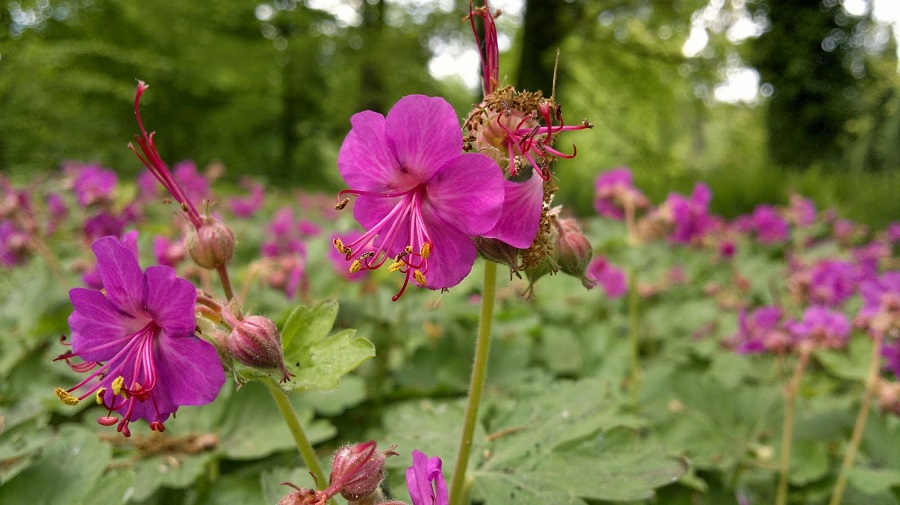
Chinese silver grass (Miscanthus sinensis)
Chinese silver grass belongs to the group of ornamental grasses. It’s a perfect addition to all garden arrangements, and can be combined with any plant, although it looks better with tall species.
As for the requirements, this perennial loves growing in full sun or only slightly obscured spots. The plant cannot be exposed to wind - otherwise there’s a risk it will lay on the ground. The soil is not important - although Chinese silver grass doesn’t like sandy grounds. Any other type of soil is just perfec for it.
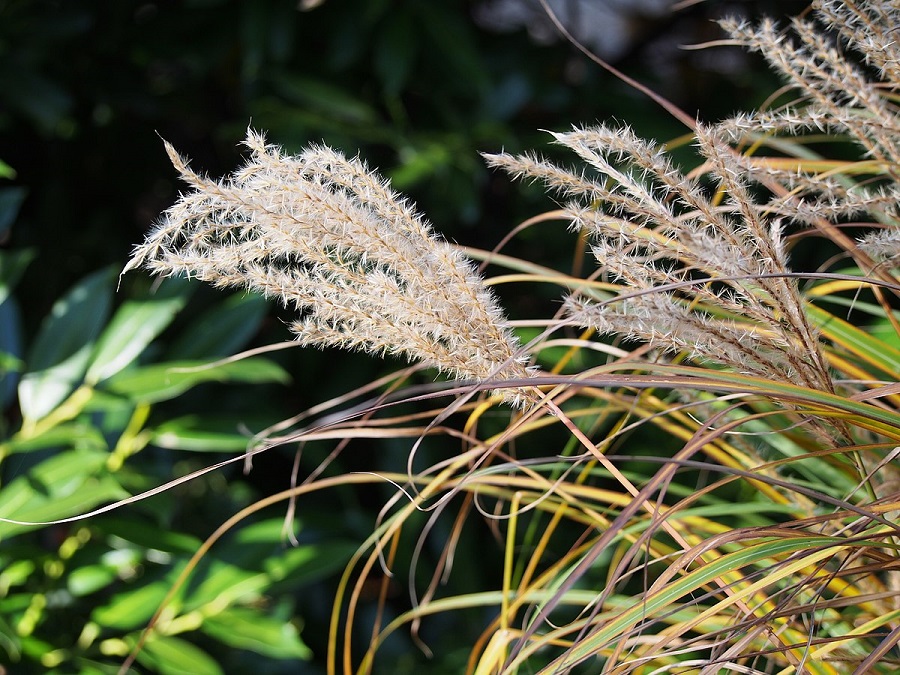
Purple loosestrife (Lythrum salicaria)
Purple loosestrife is popular all over the world. It’s planted in gardens, although it occurs naturally in many places. What’s more, it’s considered an invasive species and gets destroyed in some countries.
Depending on the soil and how you take care of it, the perennial plant can reach from 60-70 cm to 1 meter. The type of soil is not important - but it should be slightly damp. Purple loosestrife is one of the full sun perennials.
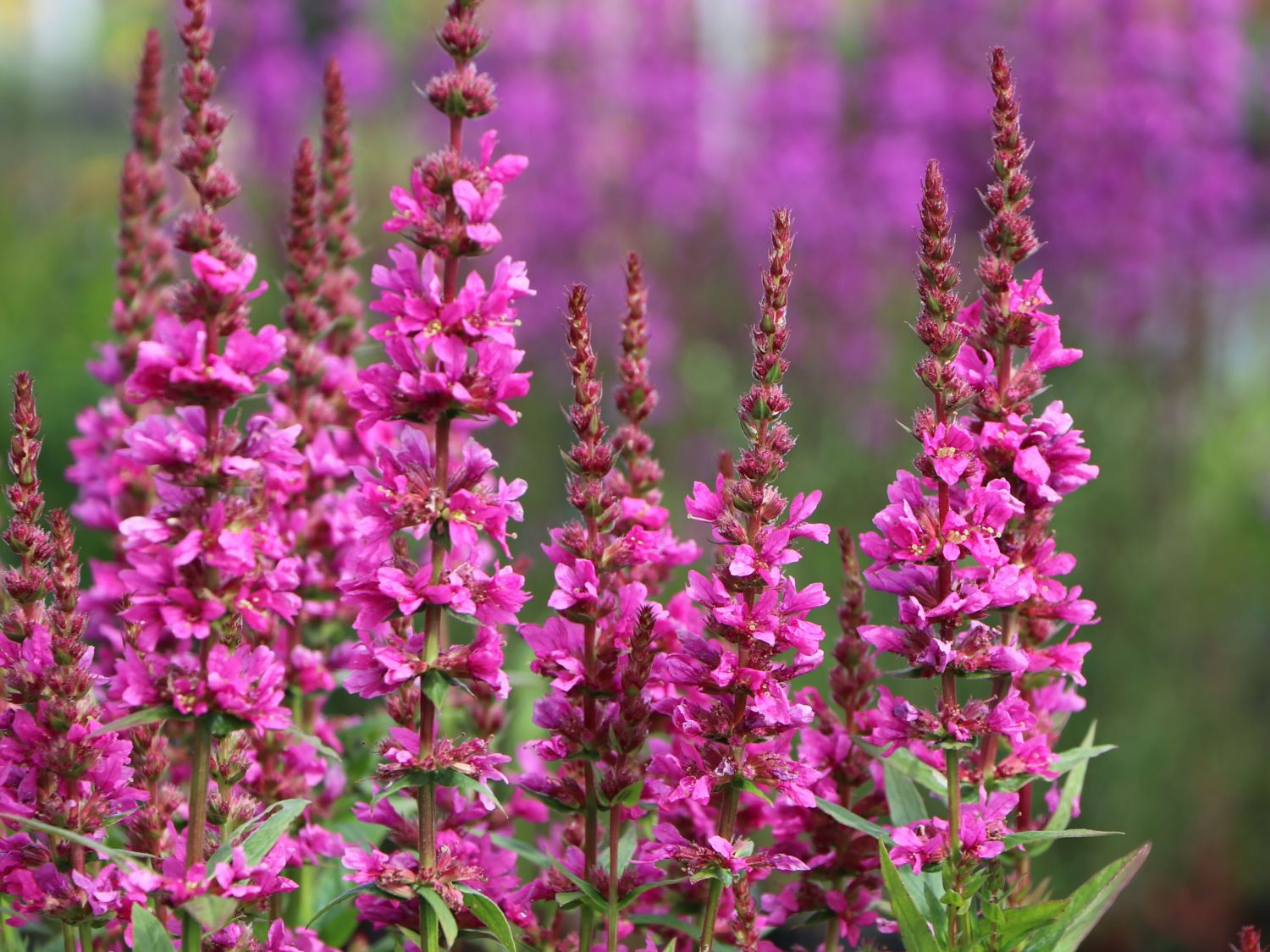
Fan columbine (Aquilegia flabellata)
Fan columbine is considered one of the best plants for beginner gardeners - mostly because it doesn’t require too much care. Full sun and fertile ground make perfect conditions for this perennial. If you want more intense blooming - you can additionally feed the plant. Unfortunately, it’s not one of the long flowering perennials. Blooming typically lasts only from April to July.

Best perennials for shade
Low-growing shade-loving perennials are a perfect addition in every garden. They look great in beds located under trees or by fences. They don’t need constant access to direct sunlight to grow beautifully. Check them out - perhaps you’ll like one of them.
Funkia (Hosta)
Funkia has many varieties. Depending on which one you pick, you can expect the growth from 30 cm to 1 meter. The leaves of this perennial are quite characteristic.
As for the location, shade or half-shade is preferred. Too intense sun might scorch the leaves of this plant. Soil is an important factor as well. It should be slightly acidic. Make sure it’s moist enough as well.

Black cohosh (Actaea racemosa)
Black cohosh is a perennial also known as black snakeroot or fairy candle. It originates in South America. It’s height is quite impressive. In some cases, it grows up to 2 meters.
In addtion to the shaded spot, the plant also needs fertile soil. Supplementary feeding is important - compost is the best for this purpose. Take care of the moisture levels as well. The plant might start wilting in a too dry soil.
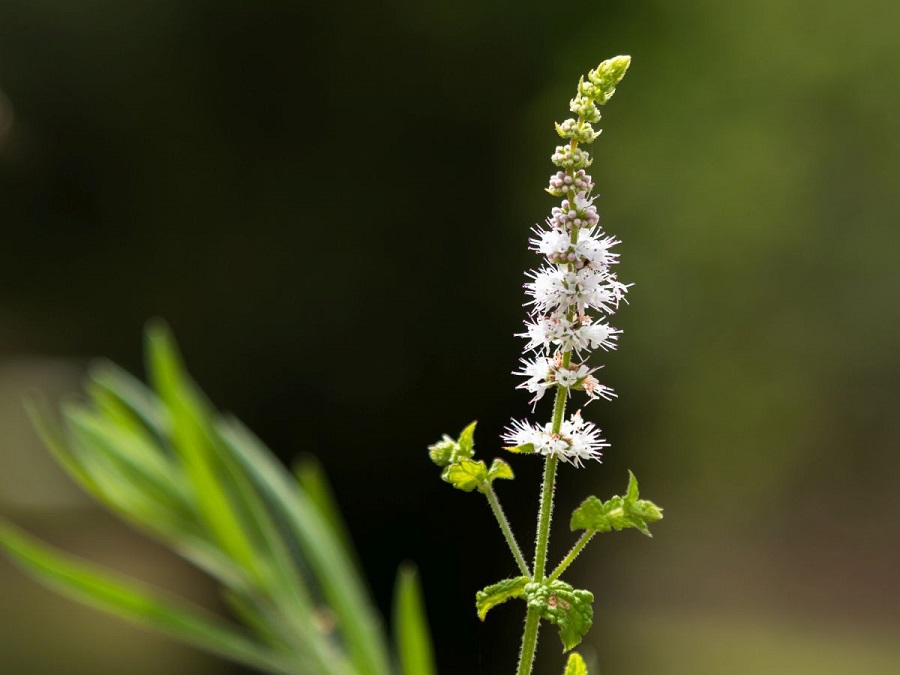
Asarabacca (Asarum europaeum)
Asarabacca’s leaves resemble an ivy. In nature, this plant grows in rainforests, mostly in South America. This plant appears in gardens as well - it’s often planted next to large shrubs and trees.
The soil for an asarabacca plant should be rich in humus and acidic. A proper moisture level is important as well, as it prevents the leaves from drying.
Pasqueflower (Pulsatilla vulgaris)
Not so long ago, pasqueflowers occured naturally in many areas. Then, they began disappearing. But there is a special garden variety, also called pasqueflower.
Everything is awe-inspiring in pasqueflowers - interesting-looking leaves, hairy stems and beautiful flowers. But it’s quite a demanding plant. The soil for pasqueflowers has to be fertile and permeable. It should also be rich in calcium - if it lacks this element, you can supplement it using special products. The ground can’t be excessively moist. Instead, it should be relatively dry.
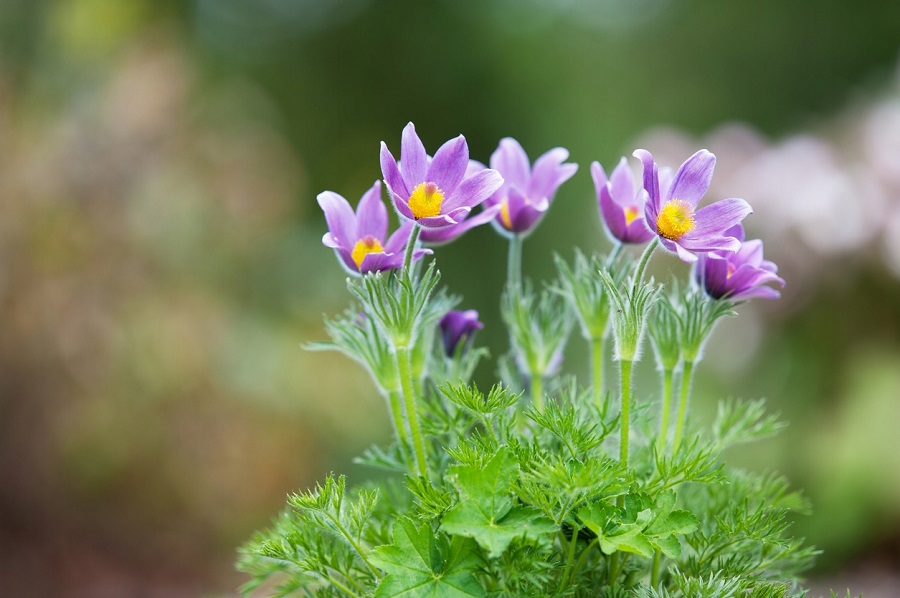
Hart’s-tongue fern (Phyllitis skolopendrium)
Hart’s-tongue fern is characteristic for its straight light-green leaves. They are long and narrow - reaching up to 60 cm. This perennial doesn’t like direct sunlight - plant it in half or full shade.
As for the soil, the plant thrives in mixes containing peat or clay. Make sure the ground is moist all the time.

📍 What are the best perennials to plant in your garden?
When planning to plant perennials in your garden, pick the one that look beautiful, and at the same time are resistant enough. Peony, funkia and black kohosh are perfect for this purpose. You can also decide on daylilies, violets and astilbes. Hart's tongue and asarabacca are interesting options as well.
📍 When do you plant perennials?
Perennial plants can be planted during various seasons - everything depends on the particular plant. Most perennials should be planted in early spring. This way, they have enough time to fully develop until summer.
Featured articles

